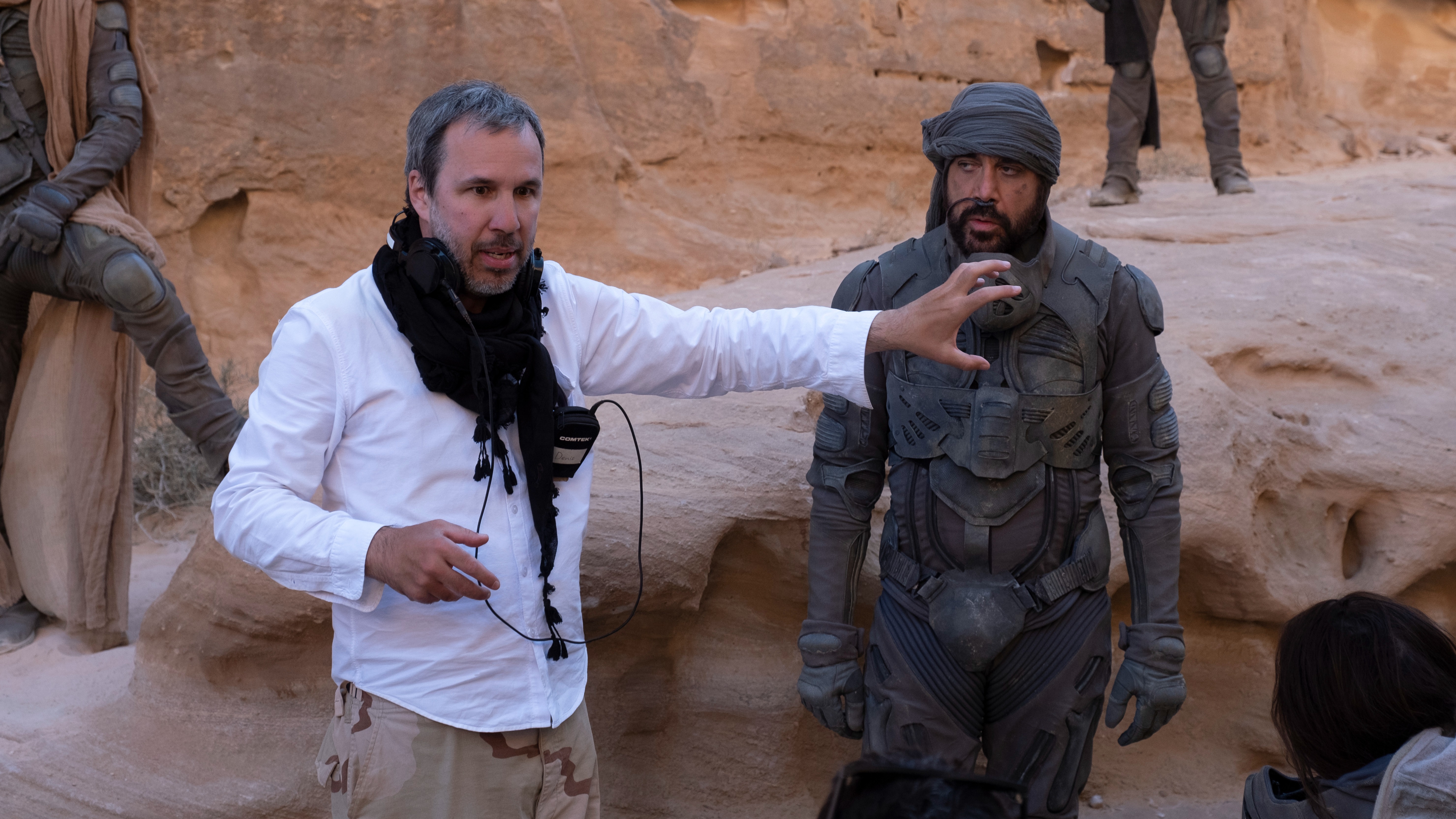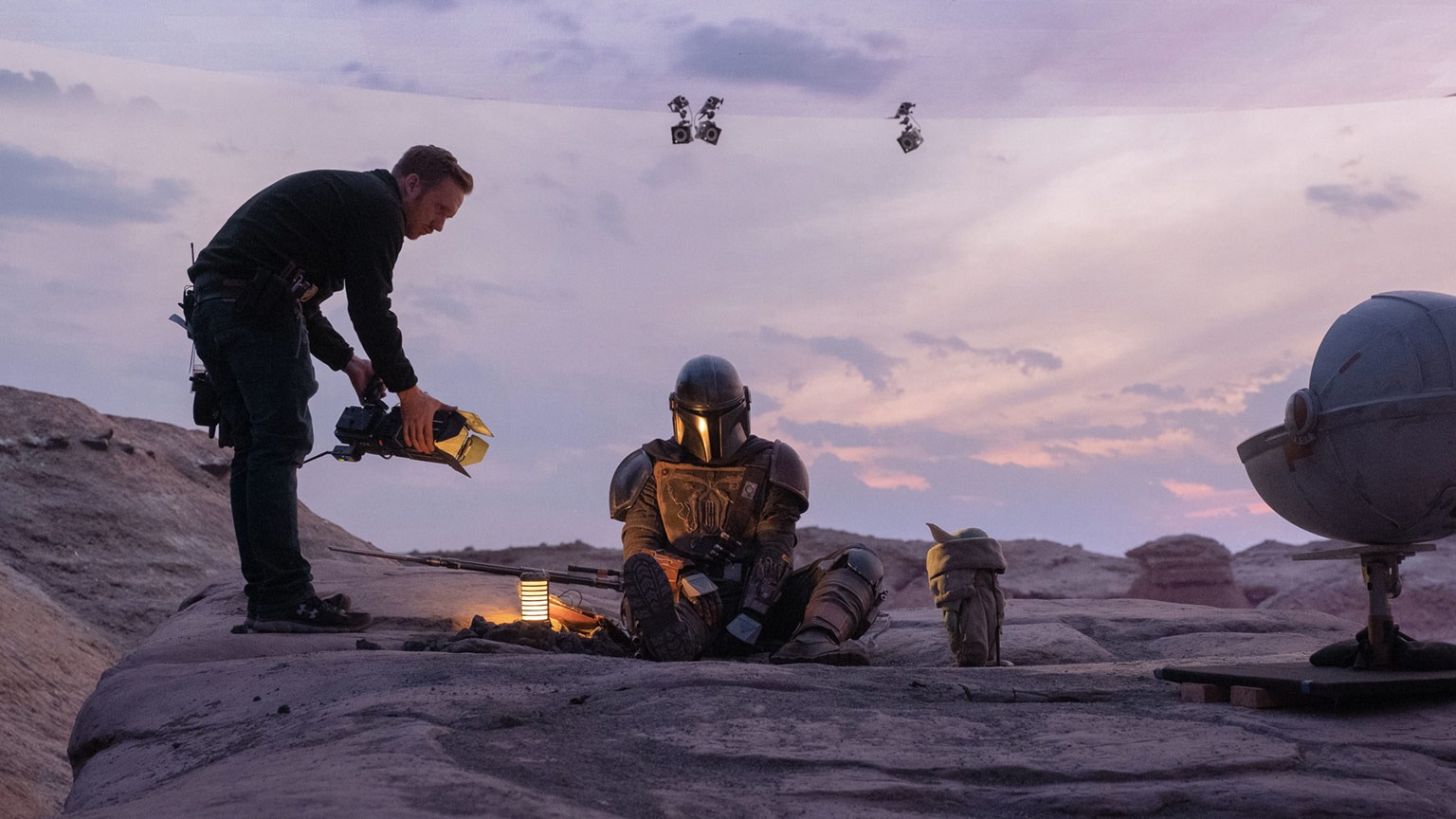This is why Dune didn’t feature The Mandalorian's giant LED displays

Dune and The Mandalorian cinematographer Greig Fraser has revealed why the innovative LED display technology used in the latter wasn’t also used on the set of Denis Villeneuve’s sci-fi epic.
Season 1 of Jon Favreau’s Star Wars series marked one of the first major productions to utilize LED wall panels, which allow actors to exist in virtual movie worlds without the need for traditional green screens.
The high-spec technology – also used in George Clooney’s The Midnight Sky – features LEDs small enough to function as individual pixels, meaning directors can control set surroundings without moving between locations or constructing expensive building projects that typically eat into large portions of a movie’s production budget.
Given that these LED displays convincingly simulate several Dune-like environments in The Mandalorian, it seemed plausible that Villeneuve might attempt to implement the same technology in his construction of Arrakis.
But in an exclusive interview with TechRadar to promote Dune’s release on digital download (January 17), 4K UHD and Blu-Ray (January 31), Fraser revealed that both timing and authenticity were the reasons behind Villeneuve’s desire to shoot on location, where possible.
“Well, here's the thing,” he said. “We were still filming The Mandalorian as we were prepping Dune. So The Mandalorian was a practice exercise [for that technology]. We were still trying to work out the bugs in the system. That prep was happening concurrently with Dune.
“Also, you can’t just say, ‘hey, let's do some [LED] screens.’ You've got to pick a path [in advance], but the path wasn’t forged yet because The Mandalorian was in the process of forging it. So it wasn't a possibility really, and it wasn't a viable option.”
Sign up for breaking news, reviews, opinion, top tech deals, and more.

Fraser then clarified that Villeneuve would likely be against the idea of using LED displays on Dune even if the option were available to him at the time.
“I will say that I think Denis wanted this film to be more tactile than we could ever have possibly achieved using LEDs,” he told us. “He wanted to shoot for real. So what did we do? We went to Abu Dhabi. We got up at 3am. We went out to the desert as the sun was rising, we shot the scene, and then we left and came back at sunset.
“So I think that was the difference between [the two methods] – that tactility which occurs when you're really getting sand in your mouth.”
A preference for practical
In a separate interview with TechRadar, Dune’s Visual Effects Supervisor, Paul Lambert, echoed Villeneuve’s preference to shoot in-situ for practical reasons: “We had discussed using LED screens [on Dune], because Greig [Fraser] had done the first season of The Mandalorian using that technology. But we knew we couldn’t get that harsh intensity of light with an LED screen.”
“Also,” Lambert added, “Denis has got this saying: nature supersedes the storyboards. He adapts the scene when he turns up on set. It’s a very organic process. So trying to set up everything prior to shooting doesn’t really work with him, because he likes to think on his feet. It’s terrifying – but also exhilarating.”
Incidentally, Dune’s Head of Production Design, Patrice Vermette, also told TechRadar that “it was important for [his team] to try and be as original as [they] could, staying away from things like Star Wars, which was obviously so much influenced by Dune.”
Perhaps if Dune had adopted the display technology used in The Mandalorian, then, the opposite would, for once, be true.

Axel is TechRadar's Phones Editor, reporting on everything from the latest Apple developments to newest AI breakthroughs as part of the site's Mobile Computing vertical. Having previously written for publications including Esquire and FourFourTwo, Axel is well-versed in the applications of technology beyond the desktop, and his coverage extends from general reporting and analysis to in-depth interviews and opinion.
Axel studied for a degree in English Literature at the University of Warwick before joining TechRadar in 2020, where he earned an NCTJ qualification as part of the company’s inaugural digital training scheme.